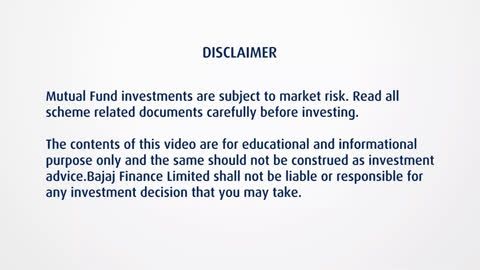Frequently asked questions
Mutual funds are generally classified according to asset classes. Most mutual funds are categorised into equity, debt, and hybrid funds.
Equity: These mutual funds invest primarily in equity stocks (up to 100%). ELSS/ tax saver mutual funds are a subcategory within equity that allows tax benefits under section 80C of the Income Tax Act, 1961 and has a lock-in period of three years.
Debt: These mutual funds invest in debt instruments like bonds, treasury bills, etc. (except equity).
Hybrid: Hybrid mutual funds invest in a combination of equity and debt investments.
A rating is a metric based on the mutual fund's historical risk and returns performance. This serves as a means to compare different funds of the same category over time. Independent agencies like CRISIL, Value Research, Morningstar, and others rate mutual funds.
A mutual fund portfolio gives you an insight into all your mutual fund investments at one glance.
Currently, NRIs won't be able to invest through our upcoming platform. Only resident Indian citizens above 18 years will be able to invest in mutual funds with Bajaj Finance.
PAN cards are mandatory for mutual fund investments. We request you to apply for a PAN before investing in mutual funds.
Mutual fund account creation is a pre-requisite for investing on our upcoming platform. If your KYC is already registered, you will not be required to submit your proof of identity (POI) and proof of address (POA) details.
A systematic withdrawal plan (SWP) is a mutual fund facility where the investor can withdraw fixed amounts regularly, like on a monthly or quarterly basis. The investor may choose to withdraw only the gains or sell a few units and get the money. It is ideal for people who need a regular income.
A growth option is where the profits gained on the funds are reinvested in the market, which helps in appreciation along with the principal amount invested. The profits are periodically paid back to the investor in the income distribution capital withdrawal (IDCW) option instead of reinvesting it in the market.
Large-cap funds are primarily invested in companies with the highest market capitalisation (from the top 100 stocks).
Mid-cap funds are mainly invested in companies with a mid-ranged market capitalisation (from stocks listed in the top 101-250).
Asset under management (AUM) is the total market value of the assets/ capital that a particular mutual fund manages and holds at a given time.
A folio number is a unique identifier issued by an asset management company (AMC) to help you identify your holdings within a specific mutual fund.
Net asset value (NAV) is the market value of one fund unit. These values change every day and are the price at which an investor will buy or sell the units.
Redemption is when investors choose to withdraw their investments at the applicable NAV. The liquidity of mutual fund investment refers to redemption. It can be done either online or offline. A redemption fee is also charged in this process.
A lock-in period is a defined period for specific funds, wherein the investors can't redeem the units or redeem their units only after paying a charge (exit load). For instance, ELSS funds, which are tax-saving mutual funds, have a lock-in period of three years in which investors can't exit at all. An exit load of 1% is usually charged on equity funds if withdrawn before a year. However, investors may redeem their ELSS mutual funds any time after the lock-in period is over.
Mutual funds are market-linked, and there is no way to predict the market fluctuations. The value of an asset can increase or decrease, which makes them subject to risk.
The expense ratio is the annual maintenance charge that an AMC charges its investors to finance the expenses incurred in managing a mutual fund.
Exit load is the fee an investor is liable to pay to the AMCs while redeeming funds or exiting prematurely (before the lock-in period ends).
The exit load is charged mainly to discourage investors from redeeming their units during the lock-in period.
Gain or loss on redemption of mutual funds is called capital gains/loss. The period of holding load defines whether it is short term capital gain (STCG) or long-term capital gain (LTCG).
The tax rate depends on the holding period of the investment and the type of asset.
Equity funds:
i) Minimum holding period for LTCG - 1 year
ii) Tax implication in case of STCG - 15% + 4% cess on 15% = 15.60%
iii) Tax implication in case of LTCG - 10% + 4% cess on the 10% = 10.40% (if the long-term gain exceeds Rs. 1 lakh)
Non-equity funds:
i) Minimum holding period for LTCG - 3 year
ii) Tax implication in case of STCG - As per the tax rate of the investor (30% + 4% cess on 30% = 31.20% for investors in the highest tax slab)
iii) Tax implication in case of LTCG - 20% with indexation
Dividend distribution tax (DDT) in case of both equity and non-equity funds:
10% tax deducted at source (TDS) on dividend income exceeding Rs. 5,000
Note: The information shared is on a best effort basis. Please consult an independent tax consultant before taking the final decision.
An independent financial advisor (IFA) offers advice to investors on various investment products, including mutual funds. A financial planner is an advisor who helps individuals or organisations achieve their long-term financial goals. An IFA can recommend the best mutual fund for you to consider.
Many equity mutual funds have given an average return of 13-15% in the last few years. While this gain is considerably higher than the inflation rate, and one should always aim to beat inflation, it is essential to note that mutual funds are subject to market fluctuations.
Lien is a document that gives a bank the ownership of the fund units of an individual. The bank has the right to hold or sell these fund units. These fund units are collateral for the offered loan amount.
Disclaimer
Mutual Fund investments are subject to market risks; read all scheme related documents carefully.
Bajaj Finance Limited ('BFL') is registered with RBI as a deposit accepting Non-Banking Financial Institution, and with the Association of Mutual Funds in India ("AMFI") as a distributor of third-party Mutual Funds (shortly referred to as 'Mutual Funds').
Customers interested in investing in Direct Mutual Funds may consider placing their investments through Bajaj Finserv Direct Limited ("BFDL"), a wholly-owned subsidiary of Bajaj Finserv Limited and is registered with SEBI as an Investment Advisor with Registration no. INA000016083. Mutual Funds are available to resident Indians only on the BFDL platform and NOT available to any person residing outside the territorial jurisdiction of India. It may be noted that BFL is merely referring potential customers who may evince interest in investing in Direct Mutual Fund Schemes to BFDL, without risk or responsibility on the part of BFL.
BFL does NOT provide investment advisory services in any manner or form. BFL does NOT perform risk profiling of the investor and does NOT carry independent research or analysis, including on any Mutual Fund schemes or other investments. NO customised/personalised suitability assessment is done by BFL. Further, BFL does NOT provide any guarantee of return on investment. Hence, the final investment decision shall at all times exclusively remain with the investor alone, and BFL shall not be liable or held liable for any consequences thereof.








